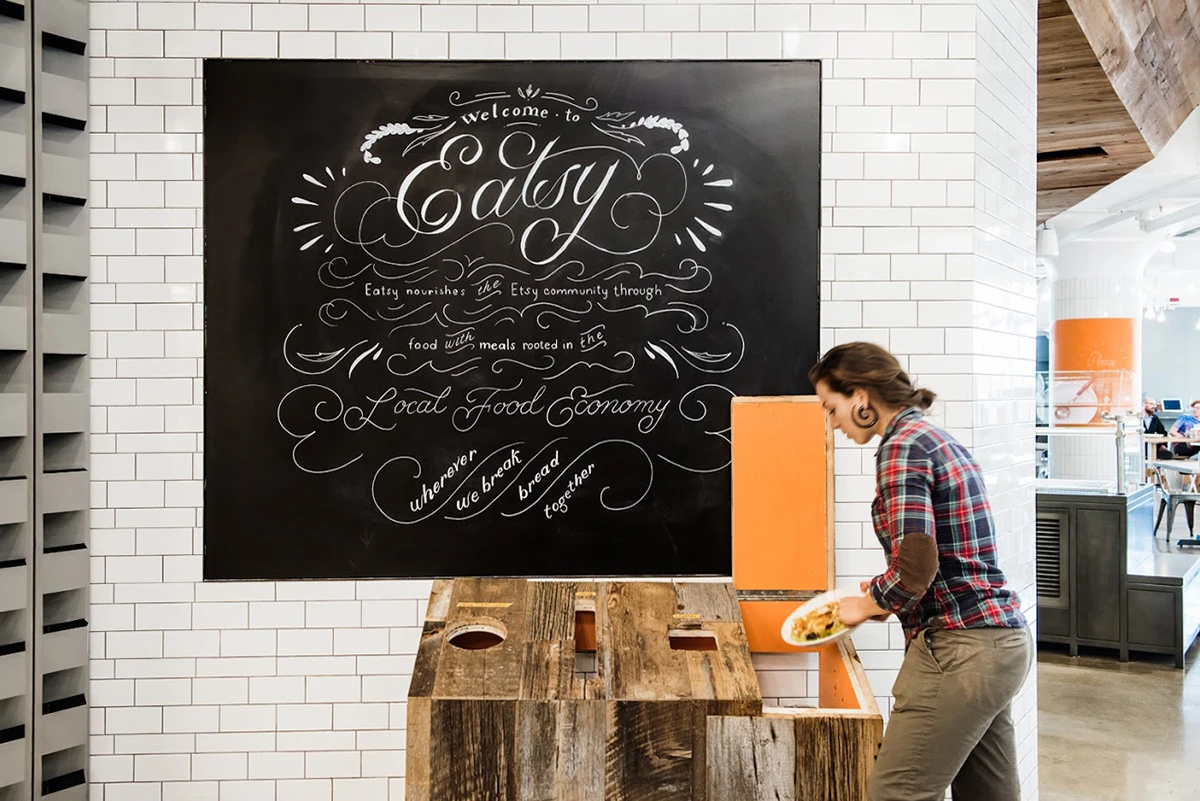When Etsy went public in 2015, it was the largest B Corporation ever to do so—and only the second in history. The handmade goods marketplace has since retained its B Corp status, which means it’s beholden to the nonprofit B Lab’s strict guidelines for social and environmental responsibility. Of course, this comes as little surprise from a company that counts among its values being a “mindful, transparent, and humane business.”
Now, in keeping with another Etsy value—sustainability—the company is snapping up a new bragging right: the greenest office space in tech. When Etsy first built its sprawling headquarters in the Dumbo section of Brooklyn, it did so with the intent of meeting Petal Certification through the Living Building Challenge, a green building certification program that is more stringent than the more recognizable LEED rating system. Etsy has now done just that, making it the first tech company to get such a certification—and the first to actively pursue it, according to Etsy’s head of sustainability, Devon Leahy.

For Etsy, that meant using reclaimed wood and screening more than 1,500 items in the office (everything from paints and adhesives to the heavy metals in A/V equipment) to ensure they didn’t contain chemicals on the “Red List,” which Leahy says are considered the most toxic to humans and the environment. The Materials Petal also required local sourcing, something Etsy’s office has in spades, between the myriad art installations and handmade furniture pieces that pepper the space.
As the largest building to receive Petal certification, Etsy’s office joins a list of just 56 buildings the world over that have been recognized and certified by the Living Building Challenge. (About 365 buildings are registered, which means they are being evaluated for certification.) After all, it requires forethought and patience, and some Petals can be impossible to pursue depending on the building site; Etsy was unable to attempt net-zero energy and water due to the space and location in Brooklyn.

That forces Etsy to think about the potential waste created by every single item that finds its way into the office. “If we’re bringing in bags of chips, we need a solution to divert those from landfill,” Leahy says.
To reduce food waste, Etsy has tried to move away from individually wrapped snacks and cut back on plastic wrapping or other packaging—for example, by sourcing cheese and beef jerky locally and buying in bulk.

Etsy’s hope is to also educate companies that have been slower to adopt sustainable measures. And what better way to lure them in than with technology? To weigh and track its waste internally, Etsy developed a platform called DIVERTsy; starting today, DIVERTsy will be open-sourced and available to anyone who wishes to use it.

Perhaps other companies will look upon waste reduction and sustainable building as a source of innovation, as Etsy has. According to Leahy, some companies have already expressed an interest in pursuing the Living Building certification, and Etsy is conducting a DIVERTsy pilot with a handful of organizations. “Etsy may not be the larger tech company, but we definitely feel like through this project we’re able to impact our peers and our neighbors in New York,” Leahy said.
This story has been updated to reflect the most recent data on the number of buildings recognized and certified by the Living Building Challenge.
Recognize your brand’s excellence by applying to this year’s Brands That Matter Awards before the early-rate deadline, May 3.
